#lorawan devices
Text
GPIOs do LoRaMesh da Radioenge: Portas digitais
Aprenda como usar as GPIOs do módulo LoRaMesh da Radioenge
As GPIOs do LoRaMesh da Radioenge possibilita que possamos fazer aplicações de automação com um uso reduzido de hardware, dedicando apenas ao circuito de chaveamento (se necessário) e de alimentação.
No total temos no LoRaMesh 8 GPIOs sendo todas configuráveis como entrada ou saída digital e duas como leitura analógica. Porém neste post vamos apenas abordar as portas digitais.
Por qual motivo…
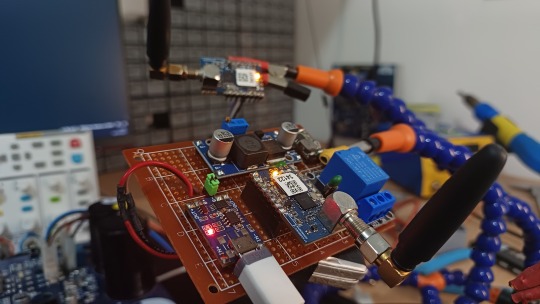
View On WordPress
#lora mesh arduino#lora mesh chat#lora mesh device#lora mesh library#lora mesh module#lora mesh network#lora mesh network raspberry pi#lora mesh protocol#lora mesh radio#lora mesh range#lora vs lorawan#loramesh#lorawan#lorawan devices#lorawan gateway#lorawan network#mesh lora
0 notes
Text
Has the Internet of Things (IoT) changed our daily lives?
The Internet of Things (IoT) is drastically changing our lives, making everything more connected and accessible. IoT has made its way into everyday items, making them part of an information ecosystem that's reshaping our world.
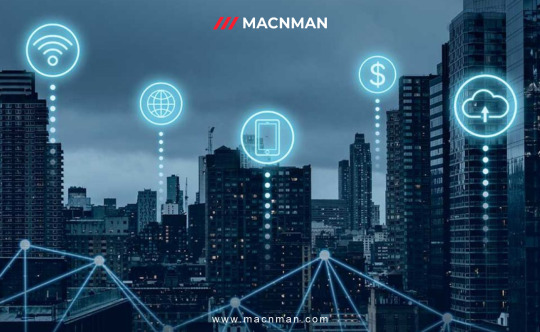
So, how will IoT change the world? IoT has already revolutionized where and how work is done across various industries. It's ushering in the era of the Internet of Everything (IoE), connecting machines, people, processes, and data in ways that profoundly impact our daily lives.
Looking at real-life IoT examples, we see automated temperature control through thermostats, smart devices like Amazon Echo and Google Home, wearables tracking heart rates, home security systems, and voice-activated smart lighting systems.
IoT has a profound influence on our daily routines, transforming various aspects of our lives by harnessing the power of connectivity, data, and intelligent machines.
Smart Home Convenience: IoT has made our homes smarter and more convenient. We can control our thermostats, lights, and appliances remotely using smartphones or voice commands through devices like Amazon Echo and Google Home. Smart locks, cameras, and doorbells provide enhanced security and peace of mind.
Health and Wellness: Wearable IoT devices such as fitness trackers and smartwatches have become commonplace. They help individuals monitor their physical activity, heart rate, sleep patterns, and more. These devices encourage healthier lifestyles and empower people to take charge of their well-being.
Connected Transportation: IoT plays a significant role in transportation through applications like vehicle telematics and navigation systems. Smart cars can communicate with each other and with traffic infrastructure to optimize routes and enhance safety. Ride-sharing apps also rely on IoT for efficient matching and tracking.
Precision Agriculture: In agriculture, IoT sensors and devices monitor soil conditions, crop health, and weather data. Farmers can make data-driven decisions to optimize irrigation, fertilization, and pest control, increasing crop yields while conserving resources.
Healthcare: IoT has transformed healthcare with remote patient monitoring. Devices can track vital signs and transmit data to healthcare providers, allowing for early intervention and reducing the need for frequent hospital visits. IoT-enabled medical equipment also enhances patient care.
Retail and Shopping: IoT has changed the way we shop. Smart shelves and beacons in stores provide personalized offers and product recommendations. E-commerce benefits from IoT through inventory management, tracking deliveries, and optimizing supply chains.
Energy Efficiency: Smart meters and IoT-connected appliances enable homeowners to monitor and reduce energy consumption. This not only lowers utility bills but also contributes to environmental sustainability.
Industrial IoT (IIoT): In the industrial sector, IoT sensors and automation improve production processes, reduce downtime, and enhance overall efficiency. IIoT also enables predictive maintenance, saving both time and resources.
Environmental Monitoring: IoT is used for environmental monitoring and conservation efforts. Sensors collect data on air quality, water quality, and wildlife movement, aiding in environmental research and protection.
Smart Cities: IoT technologies are integral to smart city initiatives. They help manage traffic flow, optimize waste collection, enhance public safety, and provide real-time information to residents and visitors.
Supply Chain Optimization: Businesses use IoT to track goods and shipments throughout the supply chain. This improves inventory management, reduces losses, and ensures products reach consumers more efficiently.

In essence, IoT has become an integral part of modern life, affecting various aspects of our daily routines. Its ability to connect devices, collect data, and enable automation has brought about greater convenience, efficiency, and connectivity in nearly every industry and sector. As IoT continues to evolve, its impact on our lives will likely grow even more significant.
0 notes
Text
The Things Network: Primeiros passos
The Things Nework é o maior network server de LoRaWAN do planeta, sendo totalmente colaborativo e gratuito. Venha aprender a usar
A The Things Network ou TTN é um servidor de rede LoRaWAN colaborativa que permite que qualquer pessoa ou empresa possa ser um ponto de conexão LoRaWAN como também pode utilizar a cobertura já existente para conectar os end devices tudo de forma gratuita.
1 O que é The Things Network?
A TTN é um network server criado em 2015 com o objetivo de criar uma cobertura global e colaborativa de LoRaWAN…
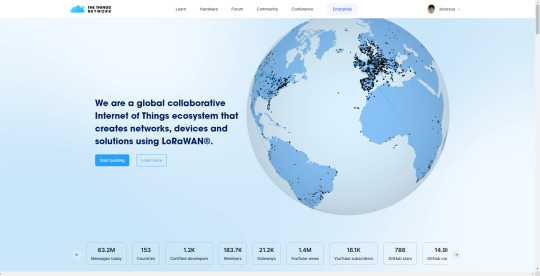
Ver no WordPress
#arduino lorawan#arduino lorawan library#esp32 lorawan#lorawan#lorawan application server#lorawan concentrator#lorawan devices#lorawan distance#lorawan gateway#lorawan network#lorawan the things network#the things network#the things network gateway#the things network map
0 notes
Text
Specification • PM2.5, PM10 based pollution Detection, • CO2 level monitoring for traffic density. • Auto path clearance for Ambulance and fire brigade based on RF communication to traffic light via Mobile/Web application MCU Specification • SX1262+STM8L152 integrated. • Frequency Range: 865MHz ~ 867MHz. • Maximum Power +21dBm constant RF
#Best LoRaWAN Air Pollution Monitoring#Hydraulic Trainer kit & Pneumatic Trainer kit manufacturers#LoRaWAN Air Pollution Monitoring system manufacturers#lorawan device#lorawan vs lora#lorawan temperature sensor#lorawan end node
0 notes
Text
https://poisonedthoughts.com/lorawan-testers-for-range-coverage/
Lorawan Testers For Range Coverage. Coverage testing for LoRaWAN is very important, you may want to know more about the exact limits and limitations of LoRaWAN. Whether it’s to see if it’s compatible with a device located far from your home, whether it’s a wristwatch used outdoors, or perhaps a water or gas sensor placed underground. A coverage test helps you evaluate the coverage area of the WAN.
Villa owners with rental apartments can also try the offer. RAKwireless can help you achieve this goal effortlessly. The coverage test mainly depends on your specifications and is performed to help you find out the map or radius of your wireless network
1 note
·
View note
Text
Container Tracker

The Container Tracker is a device that integrates GNSS (GPS, Beidou, Glonass), Bluetooth, and LoRa technology for accurate outdoor and indoor positioning of assets. It has an IP68 enclosure that provides protection against water and dust ingress. It has a large battery capacity that can support up to 180,000 Bluetooth tracking messages over 30,000 GPS coordinates. It supports tracking up to 100 Bluetooth beacons and also supports UUID change to avoid interference from other devices.
For More:
3 notes
·
View notes
Text
The Evolving Landscape of IoT Services: Unlocking New Dimensions in Connectivity
In an increasingly interconnected world, the term "Internet of Things" (IoT) has emerged as a cornerstone of modern technological evolution. IoT is a revolutionary concept that extends internet connectivity beyond traditional devices like computers and smartphones to a broad range of systems and devices, enabling them to collect and exchange data seamlessly. IoT services, the backbone of this ecosystem, offer the tools and platforms that facilitate the seamless interaction among these connected devices, ultimately leading to smarter decision-making and more efficient operations across numerous sectors. In this blog, we'll explore the nature, applications, and future implications of IoT services.
What are IoT Services?
IoT services encompass a broad suite of offerings that include the development, management, and deployment of IoT solutions. These services are designed to support interconnected devices across various industries, providing capabilities that range from device management and integration to analytics and security solutions. IoT service providers deliver the infrastructure and platforms necessary for devices to communicate, analyze data, and operate autonomously in a secure environment.
Key Components of IoT Services
Device Management: This includes the provisioning, administration, and maintenance of IoT devices. Effective device management ensures devices are always operational, firmware and software updates are applied, and security is maintained.
Connectivity Management: IoT devices require reliable connectivity to transmit data. IoT services provide robust connectivity solutions across different networks (such as cellular, Wi-Fi, and LoRaWAN), ensuring persistent and secure data flow between devices and their managing platforms.
Data Analytics and Processing: IoT generates vast amounts of data. IoT services provide powerful analytics tools that process this data to derive meaningful insights, which can be used to improve operational efficiency, predict maintenance needs, and enhance decision-making processes.
Security Services: Security is paramount in IoT networks to protect sensitive data and maintain privacy. IoT services include comprehensive security frameworks that address potential vulnerabilities, from the device level to network interactions and data storage.
Applications of IoT Services
The applications of IoT services are vast and varied, spanning multiple industries:
Smart Homes: IoT services enable smart home devices like thermostats, lights, and security systems to operate together seamlessly, improving energy efficiency and security while offering convenience and comfort to homeowners.
Healthcare: In healthcare, IoT services support devices like wearable health monitors and connected medical equipment, facilitating remote health monitoring and improving patient care through real-time data sharing.
Manufacturing: Known as Industrial IoT (IIoT), IoT services in manufacturing optimize production processes, improve supply chain management, and enhance safety by monitoring equipment and environmental conditions.
Smart Cities: IoT services contribute to the development of smart cities through intelligent traffic management systems, energy-efficient buildings, and improved public services through the use of connected sensors and devices.
Future of IoT Services
The future of IoT services looks promising, with advancements poised to further transform how we live and work. Emerging trends include:
Increased Adoption of AI: Integration of AI with IoT services is enhancing the autonomy of systems, enabling more sophisticated data analysis, and predictive maintenance.
Edge Computing: By processing data closer to where it is generated, edge computing reduces latency and bandwidth use, enhancing the responsiveness of IoT systems.
5G Technology: The rollout of 5G networks will significantly boost the speed and capacity of IoT services, enabling more devices to connect and interact more reliably and in real-time.
Conclusion
IoT services are reshaping the technological landscape, driving innovation across various sectors and promising to enhance the quality of life and operational efficiency. As these services evolve, they will play a crucial role in the realization of a fully connected world. For businesses and consumers alike, understanding and leveraging IoT services will be key to gaining competitive advantages and experiencing unprecedented convenience and efficiency in daily activities. As we look to the future, the potential of IoT services continues to expand, promising exciting possibilities for everyone in the ecosystem.
0 notes
Text
Empowering Connectivity: Exploring the Evolution of IoT Remote Monitoring Devices
In an era defined by connectivity and data-driven decision-making, IoT (Internet of Things) remote monitoring devices have emerged as indispensable tools across various industries. These compact yet powerful devices enable real-time monitoring, management, and control of assets, processes, and environments from virtually anywhere in the world. In this article, we delve into the transformative potential of IoT remote monitoring devices, exploring their applications, benefits, and the evolving landscape of this dynamic technology.

The Essence of IoT Remote Monitoring Devices
At the heart of IoT remote monitoring devices lies the convergence of hardware, software, and connectivity technologies. These devices are equipped with an array of sensors capable of capturing diverse environmental parameters, such as temperature, humidity, pressure, vibration, and more. By harnessing wireless communication protocols like Wi-Fi, cellular, Bluetooth, or LoRaWAN, IoT remote monitoring devices transmit the collected data to cloud-based platforms for analysis, visualization, and action.
Applications Across Industries
The versatility of IoT remote monitoring devices extends across a myriad of industries, revolutionizing operations and unlocking new opportunities for efficiency and optimization:
Manufacturing: In manufacturing facilities, IoT remote monitoring devices enable predictive maintenance by continuously monitoring equipment health and performance metrics.
Healthcare: In healthcare settings, IoT remote monitoring devices facilitate remote patient monitoring, allowing healthcare providers to monitor vital signs, medication adherence, and disease progression from a distance. This enhances patient care, enables early intervention, and reduces the need for frequent hospital visits.
Agriculture: In agriculture, IoT remote monitoring devices help farmers optimize irrigation, monitor soil health, track weather conditions, and manage livestock remotely. By providing real-time insights, these devices enable data-driven decision-making, resulting in higher crop yields and sustainable farming practices.
Energy Management: In the energy sector, IoT remote monitoring devices enable efficient management of energy assets, including power plants, substations, and renewable energy installations. By monitoring energy consumption, detecting anomalies, and optimizing resource allocation, these devices contribute to energy conservation and cost savings.
Logistics and Supply Chain: In logistics and supply chain management, IoT remote monitoring devices provide end-to-end visibility into the movement and condition of goods during transit. From temperature-sensitive pharmaceuticals to perishable food items, these devices ensure compliance with regulatory requirements, maintain product quality, and mitigate the risk of spoilage or damage.
Benefits and Advantages
The adoption of IoT remote monitoring devices offers a myriad of benefits to organizations across industries:
Real-time Visibility: Organizations gain real-time visibility into their operations, enabling proactive decision-making and rapid response to changing conditions.
Cost Savings: By enabling predictive maintenance, optimizing resource utilization, and minimizing downtime, IoT remote monitoring devices help organizations reduce operational costs and improve efficiency.
Enhanced Safety and Compliance: In industries where safety and regulatory compliance are paramount, IoT remote monitoring devices provide continuous monitoring and early detection of potential hazards, ensuring a safe and compliant working environment.
Scalability and Flexibility: IoT remote monitoring solutions are inherently scalable and adaptable, allowing organizations to deploy and expand their monitoring capabilities as needed, without significant infrastructure investments.
The Future of IoT Remote Monitoring Devices
As technology continues to evolve, the future of IoT remote monitoring devices holds immense promise.
Edge Computing: The integration of edge computing capabilities into IoT remote monitoring devices enables real-time data processing and analysis at the edge of the network, reducing latency and bandwidth requirements.
AI and Machine Learning: The integration of AI and machine learning algorithms enhances the intelligence of IoT remote monitoring devices, enabling predictive analytics, anomaly detection, and autonomous decision-making.
Blockchain Integration: The use of blockchain technology ensures data integrity, security, and transparency, enhancing trust in IoT remote monitoring systems, particularly in industries where data provenance is critical.
Interoperability and Standards: Efforts to standardize communication protocols and ensure interoperability among IoT devices facilitate seamless integration and data exchange, driving widespread adoption and innovation.
In conclusion, IoT remote monitoring devices represent a paradigm shift in how organizations monitor, manage, and optimize their operations. By harnessing the power of connectivity, data analytics, and intelligent automation, these devices empower organizations to achieve new levels of efficiency, safety, and sustainability in an increasingly interconnected world. As technology continues to advance, the potential applications and benefits of IoT remote monitoring devices are limited only by imagination.
0 notes
Text
Leading IoT Application Development Companies in Chennai
In the era of digital transformation, the Internet of Things (IoT) has emerged as a game-changing technology that enables the connection and communication of devices and systems to gather, analyze, and act on data in real-time. As businesses seek to leverage the power of IoT to drive innovation, improve efficiency, and enhance customer experiences, partnering with a trusted IoT application development company is essential. If you're searching for top-tier IoT application development companies in Chennai, you've come to the right place. Our company is a leading provider of cutting-edge IoT solutions tailored to meet the diverse needs of businesses in Chennai and beyond. In this guide, we'll explore the key features and benefits of our IoT application development services and how they can help your organization thrive in the digital age.
Key Features of Our IoT Application Development Services:
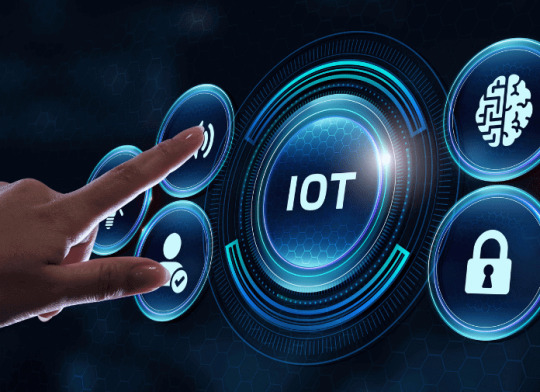
1. Customized IoT Solutions:
We specialize in developing customizediot application development companies in Chennai designed to address the specific requirements and objectives of our clients. Whether you're looking to build a smart home system, industrial automation platform, healthcare monitoring solution, or connected vehicle application, our expert team of IoT developers can turn your vision into reality with precision and expertise.
2. Expertise in IoT Technologies:
Our team possesses deep expertise in a wide range of IoT technologies, protocols, and platforms, including MQTT, CoAP, Zigbee, LoRaWAN, AWS IoT, Azure IoT, and more. We stay abreast of the latest advancements and best practices in the IoT space, enabling us to leverage the most suitable technologies and tools to deliver robust and scalable IoT solutions.
3. Sensor Integration and Data Analytics:
IoT applications rely on sensor data to gather insights and make informed decisions in real-time. We specialize in sensor integration and data analytics, enabling seamless connectivity and data exchange between devices, systems, and cloud platforms. Our advanced analytics capabilities allow clients to derive actionable insights from IoT data, driving smarter decision-making and business outcomes.
4. Cloud Integration and Edge Computing:
IoT applications often involve complex architectures that span across cloud and edge environments. We have extensive experience in cloud integration and edge computing, enabling seamless communication, data processing, and storage between IoT devices and cloud platforms. Our solutions are designed to optimize performance, minimize latency, and ensure reliability in IoT deployments.
5. Security and Privacy:
Security is a top priority in IoT application development, especially when dealing with sensitive data and mission-critical systems. We adhere to industry best practices and security standards to ensure the confidentiality, integrity, and availability of IoT systems and data. Our solutions incorporate robust authentication, encryption, access control, and monitoring mechanisms to mitigate cybersecurity risks and protect against potential threats.
Benefits of Partnering with Our IoT Application Development Company:
1. Accelerated Time-to-Market:
Our agile development approach and expertise in IoT technologies enable us to deliver high-quality IoT solutions quickly and efficiently, reducing time-to-market and giving clients a competitive advantage.
2. Scalability and Flexibility:
We design IoT solutions with scalability and flexibility in mind, allowing clients to easily scale their deployments as their business grows and adapt to changing market demands and requirements.
3. Improved Operational Efficiency:
IoT applications automate processes, optimize resource utilization, and enable predictive maintenance, leading to improved operational efficiency, cost savings, and productivity gains for businesses.
4. Enhanced Customer Experiences:
By leveraging IoT technology, businesses can create personalized, immersive, and interactive experiences for their customers, driving engagement, loyalty, and satisfaction.
5. Future-Proofing Your Business:
IoT is poised to revolutionize industries and transform business models in the years to come. Partnering with a trusted IoT application development company ensures that your business remains at the forefront of innovation and well-positioned to capitalize on emerging opportunities in the IoT space.
Conclusion:
As a leading IoT application development company in Chennai, we are committed to empowering businesses with innovative IoT solutions that drive growth, efficiency, and digital transformation. Whether you're a startup looking to disrupt the market or an enterprise seeking to optimize operations, our team has the expertise and experience to help you achieve your IoT goals. Partner with us today and embark on a transformative journey towards IoT-enabled success.
For more info. Visit us:
iot application development companies in Chennai
iot hardware development companies in Chennai
product design and development companies in Chennai
#iot application development companies in Chennai#iot hardware development companies in Chennai#product design and development companies in Chennai
0 notes
Text
New Report: Installed Base of Video Telematics Systems in North America and Europe to Hit 15 Million Units by 2028 - Exclusive Data Revealed! [https://iotbusinessnews.com/2024/04/17/04844-THE-INSTALLED-BASE-OF-VIDEO-TELEMATICS-SYSTEMS-IN-NORTH-AMERICA-AND-EUROPE-TO-REACH-15-MILLION-UNITS-BY-2028/]
RoamNook Blog
Bringing New Information: The Power of Numbers
Welcome to the RoamNook blog, your trusted source for the latest and most informative content in the world of technology. In this article, we will delve into the exciting realm of numerical data, presenting you with hard facts, key statistics, and concrete information that is sure to captivate your mind.
The Rise of Video Telematics Systems in North America and Europe
According to recent research conducted by IoT Business News, the installed base of video telematics systems in North America and Europe is projected to reach a staggering 15 million units by the year 2028. This exponential growth highlights the increasing integration of video monitoring technology in the automotive industry, leading to enhanced safety and efficiency on the roads.
Unveiling the Future of LoRaWAN
The LoRa Alliance®, a prominent global organization dedicated to promoting the LoRaWAN standard, has unveiled its comprehensive development roadmap. The tremendous success of LoRaWAN as a standardized communication protocol has paved the way for its future evolution and direction. This roadmap provides a clear vision for the technology's continued advancements, ensuring its relevance and effectiveness in the ever-expanding Internet of Things (IoT) landscape.
Revolutionizing Healthcare with IoT
IoT deployment in the healthcare sector presents numerous challenges that need to be addressed to unlock its full potential. The integration of smart devices, wearable technology, and advanced monitoring systems holds the key to transforming patient care and streamlining medical operations. By tackling these challenges head-on, healthcare providers can leverage IoT solutions to improve patient outcomes, reduce costs, and revolutionize the industry as a whole.
KORE and GoRout: Enhancing Communication on the Field
KORE, a leading provider of global IoT solutions, has partnered with GoRout, a cutting-edge sports technology company, to tackle communication challenges between players and coaches. By leveraging KORE's reliable and secure connectivity solutions, GoRout can enhance real-time communication, enabling athletes to execute strategies and improve performance on the field. This collaboration exemplifies the transformative power of IoT in the world of sports.
The Smart Waste Sensor Technology Market on the Rise
The smart waste sensor technology market is projected to grow at an impressive compound annual growth rate (CAGR) of 22.8 percent until 2028. This growth can be attributed to the increasing adoption of smart waste management solutions by municipalities and businesses alike. These sensor-based technologies optimize waste collection, reduce operational costs, and contribute to a cleaner and more sustainable environment.
Navigating the Future of Smart Parking
By the year 2028, the installed base of smart parking sensors is expected to reach a remarkable 3.2 million units. These sensors revolutionize the parking experience, providing real-time occupancy information and facilitating efficient parking guidance systems. With the integration of IoT technology, cities can optimize parking resources, reduce congestion, and enhance the overall urban experience.
Conclusion: Fueling Digital Growth with RoamNook
As we conclude this informative journey through the world of numerical facts and objective insights, we invite you to tap into the potential of RoamNook. RoamNook is an innovative technology company specializing in IT consultation, custom software development, and digital marketing. Our mission is to fuel digital growth and help businesses unlock their full potential in the digital age.
By leveraging cutting-edge technologies, such as IoT, AI, and blockchain, RoamNook empowers organizations to achieve their strategic objectives and drive sustainable growth. Partner with RoamNook today to harness the power of innovation and revolutionize your business landscape.
Contact Us:
Email: [email protected]
Phone: +1 123-456-7890
Address: 123 Main Street, City, Country
Stay Connected:
Facebook
Twitter
RSS Feed
LinkedIn
Learn More:
About IoT Business News
Advertise with Us
List Your Event
Subscribe to Our Newsletter
Contact Us
Source: https://iotbusinessnews.com/2023/10/12/08780-5-challenges-of-data-analytics-within-iot-systems-and-tips-to-solve-them/&sa=U&ved=2ahUKEwiJnc_op8qFAxVoMVkFHckqAWgQxfQBegQIBBAC&usg=AOvVaw0CkYiddso37fLRZaZ_8iPJ
0 notes
Text
Leitura analógica do LoRaMesh da Radioenge
Aprenda como usar a leitura analógica com o módulo LoRaMesh da Radioenge
A leitura analógica com o LoRaMesh possibilita com que possamos fazer um amplo sistema de sensoriamento remoto sem precisar necessariamente de microcontrolador adicional na parte do slave.
Por qual motivo usar a leitura analógica do LoRaMesh da Radioenge?
Uma leitura digital em muito dos casos já é mais que o suficiente para saber se algo está ou não funcionando, mas a leitura analógica do…

View On WordPress
#lora mesh arduino#lora mesh chat#lora mesh device#lora mesh library#lora mesh module#lora mesh network#lora mesh network raspberry pi#lora mesh protocol#lora mesh radio#lora mesh range#lora vs lorawan#loramesh#lorawan#lorawan devices#lorawan gateway#lorawan network#mesh lora
0 notes
Text
What is the difference between the LoRaWAN wireless module and LoRa gateway wireless transmission technology?
Many individuals find it challenging to differentiate between the LoRaWAN wireless module and LoRa gateway wireless transmission technology, as well as their applications within the realm of IoT.
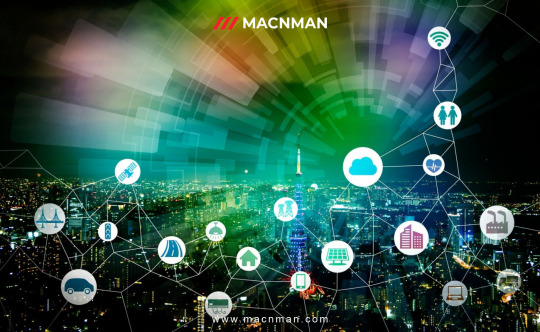
LoRaWAN specifically pertains to the networking protocol found within the MAC (Media Access Control) layer. In contrast, LoRa serves as a protocol within the physical layer. Although current LoRaWAN networking implementations utilize LoRa as the physical layer, it's worth noting that the LoRaWAN protocol also allows for the use of GFSK (Gaussian Frequency-Shift Keying) as the physical layer in specific frequency bands. From a network layering perspective, LoRaWAN can adopt various physical layer protocols, just as LoRa can serve as the physical layer for other networking technologies.
LoRa, as a technology, falls under the category of LPWAN (Low-Power Wide-Area Network) communication technologies. It represents an ultra-long-distance wireless transmission method based on spread spectrum technology, pioneered and promoted by Semtech in the United States. This approach revolutionizes the previous trade-off between transmission distance and power consumption, offering users a straightforward system capable of achieving extended range, prolonged battery life, and increased capacity. Consequently, it expands the capabilities of sensor networks. Currently, LoRa predominantly operates within free frequency bands globally, including 433/868/915MHz, among others.
On the other hand, LoRaWAN wireless communication stands as an open standard defining the communication protocol for LPWAN technology based on LoRa chips. LoRaWAN defines the Media Access Control (MAC) layer at the data link level and is overseen by the LoRa Alliance. It's crucial to distinguish between LoRa and LoRaWAN because companies like Link Labs utilize a proprietary MAC layer in conjunction with LoRa chips to create more advanced hybrid designs, such as Link Labs' Symphony Link.
LoRaWAN typically employs a star or star-to-star topology, which is generally considered superior to mesh networks due to advantages such as conserving battery power and extending communication range. In a star topology, messages are relayed to a central server through gateways, and each end node can transmit data to multiple gateways. These gateways then forward the data to the web server, where tasks like redundancy detection, security checks, and message scheduling are executed.
In summary, LoRa encompasses solely the link layer protocol, making it suitable for point-to-point (P2P) communication between nodes. In contrast, LoRaWAN includes the network layer, allowing data to be sent to any base station connected to a cloud platform. By connecting the appropriate antenna to its socket, the LoRaWAN module can operate at different frequencies, offering versatility in its applications.
0 notes
Text
Módulo LoRaWAN da Radioenge Tutorial Completo
O módulo LoRaWAN da Radioenge é homologado pela Anatel e 100% fabricado no Brasil e neste post você aprende tudo sobre ele.
O módulo LoRaWAN da Radioenge é uma placa de fabricação nacional e homologada que pode ser usada com qualquer microcontrolador ou microprocessador através de comandos AT via porta serial.
1 O que é LoRaWAN?
O LoRaWAN é um protocolo que desenvolvido para aumentar o alcance da rede LoRa e utiliza nós em estrela para diminuir ao máximo o consumo da bateria, de modo que os ‘end nodes’ fiquem…

Ver no WordPress
#arduino lorawan#arduino lorawan library#class a lorawan#esp32 lorawan#esp32 lorawan gateway#lorawan#lorawan board#lorawan concentrator#lorawan development kit#lorawan devices#lorawan esp32#lorawan examples#lorawan gateway#lorawan network
1 note
·
View note
Text
Characteristics and Advantages of LoRa Gateway + LoRa Nodes
The LoRa gateway serves as a device connecting terminal equipment to the LoRaWAN network, responsible for collecting data from multiple LoRa base stations and transmitting it to the cloud. It gathers messages transmitted by LoRa nodes and forwards them to LoRaWAN servers, facilitating communication from devices to the cloud.
Gateways typically handle packet forwarding, encryption/decryption, and communication with LoRaWAN servers.
The heatsink on the LoRa gateway ensures stable operation within a safe temperature range, thereby prolonging device lifespan and enhancing performance and reliability.
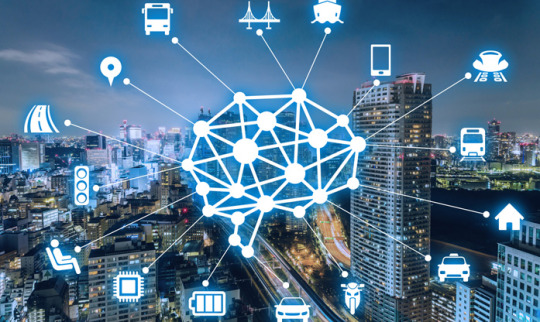
LoRa gateway chip
LoRaWAN 1301 is a compact LoRaWAN gateway frontend module with SPI interface introduced by RAKwireless. This module utilizes the SX1301 chip, a standard design from Semtech, and features a built-in TCXO crystal oscillator. It is specifically designed for LoRaWAN gateways.
Characteristics of SX1301:
Multi-channel Processing Capability: Supports simultaneous processing of multiple LoRa signal channels, up to 8 independent channels.
High Integration: Integrates 8 low-noise amplifiers (LNAs), 8 bandwidth filters (BPFs), and 1 digital baseband processor (BBP) on a single chip, realizing multi-channel LoRa reception function.
Low Power Consumption: Designed with low power consumption, suitable for long-term operation in low-power scenarios.
High Sensitivity: Has excellent receiver sensitivity, enabling reliable communication in long-range and weak signal environments.
Development Support: Offers rich software and hardware support, facilitating development and deployment for LoRaWAN gateway devices.

Characteristics of SX1302:
Higher Integration: Compared to SX1301, it integrates more functional modules, including 12 channel processing units (CHPUs), 2 main clock units (MCUs), and 1 digital signal processing unit (DSPU).
Support for More Channels: Can support up to 16 independent LoRa signal channels, providing higher data throughput and network capacity.
Compatibility: Backward compatible with SX1301 interfaces and protocols, ensuring compatibility with existing LoRaWAN infrastructure.
Improved Interference Immunity: Has stronger interference immunity, providing more stable communication performance in complex wireless environments.
Programmability: Offers greater programmability, allowing developers to customize and optimize according to specific application requirements.
Integrated Temperature Sensor: The temperature sensor integrated into SX1302 plays an important role in ensuring stable chip operation and improving system reliability.
LoRa utilizes multiple spreading factors (SF) to modulate signals, allowing for orthogonal decoding of signals with different spreading factors on the same channel. The gateway connects to the network server using standard IP, and terminals communicate with one or more gateways via single-hop communication. All terminal communications are bidirectional, and the system also supports features such as over-the-air software upgrades.
Who would use LoRa gateways?
LoRa gateways are widely used due to their numerous advantages, and they find applications in various sectors such as enterprises, large factories, smart agriculture, remote meter reading, smart manhole covers, pipe galleries, office buildings, smart inspections, smart homes, smart streetlights, smart heating, and more.
Here are the scenarios suitable for using LoRa gateways:
Limited range with multiple devices and sensors networking scenario, such as personnel positioning in factories with thousands of nodes.
Spacious areas where devices are located far apart, and neither wired nor wireless wide area networks can meet the requirements, such as smart agriculture with large distances between fields.
Scenarios with inconvenient power supply and maintenance, such as smart meter reading, where nodes are densely distributed, and it is difficult to supply power to water meters and gas meters, and battery replacement is inconvenient.
Scenarios with strong interference but requiring wireless communication, such as office buildings and pipe galleries, where wireless communication is frequent and interference is high, and the cost of wiring multiple nodes is high.
Various other areas requiring wireless local area network communication, such as smart homes, manhole covers, streetlights, heating systems, etc.
What is a LoRa node:
A LoRa node is a wireless terminal device connected to the LoRaWAN network. They can be various types of devices such as sensors, switches, alarms, etc. These nodes transmit data to the cloud or other servers through the LoRaWAN network.
A LoRa gateway acts as a bridge between the nodes and the cloud. It receives data from the nodes and transmits it to the LoRaWAN network. Additionally, the gateway can receive instructions from the network and transmit them back to the nodes.
For details, please click:https://www.nicerf.com/products/
Or click:https://nicerf.en.alibaba.com/productlist.html?spm=a2700.shop_index.88.4.1fec2b006JKUsd
For consultation, please contact NiceRF (Email: [email protected]).
0 notes
Text
0 notes